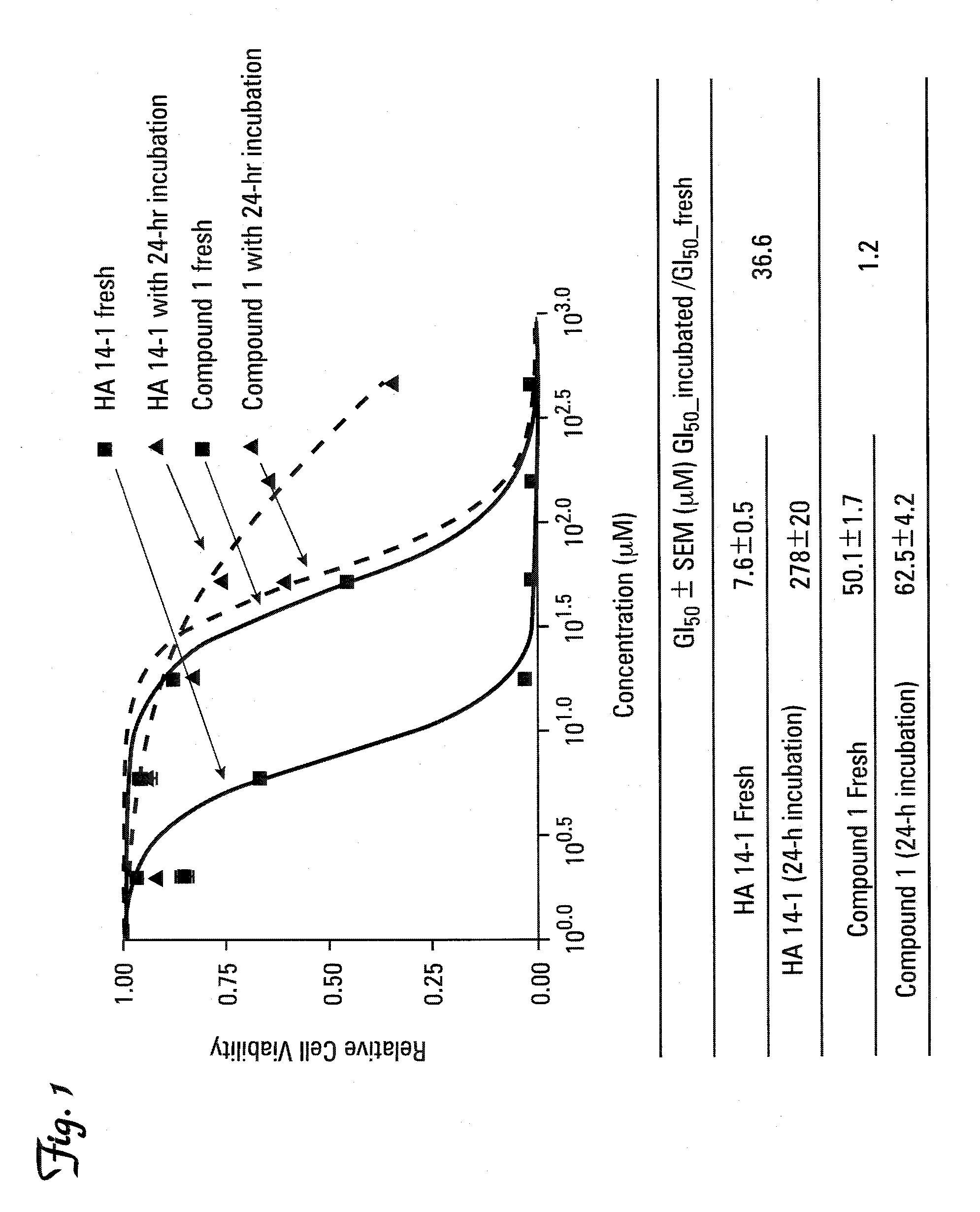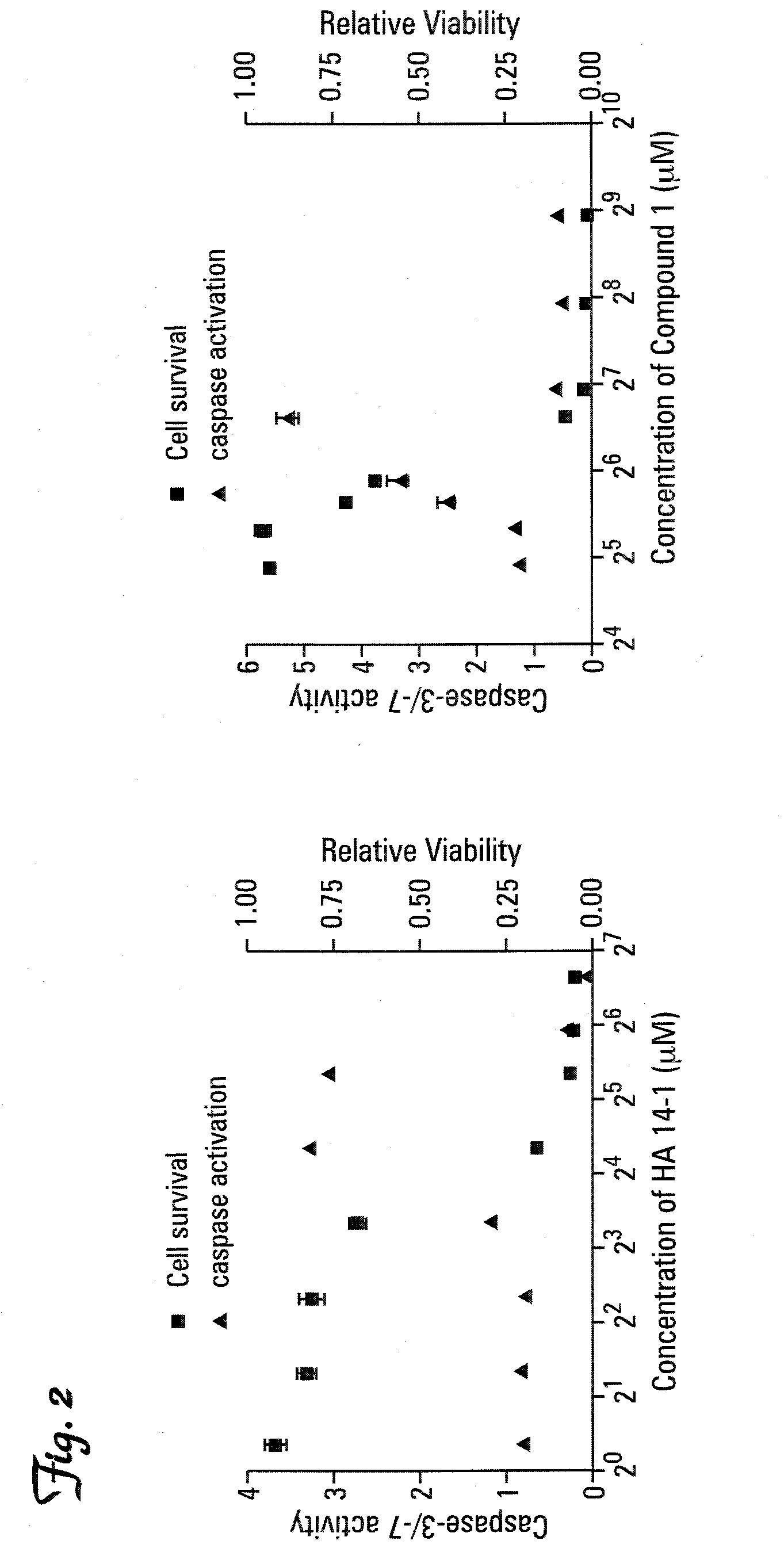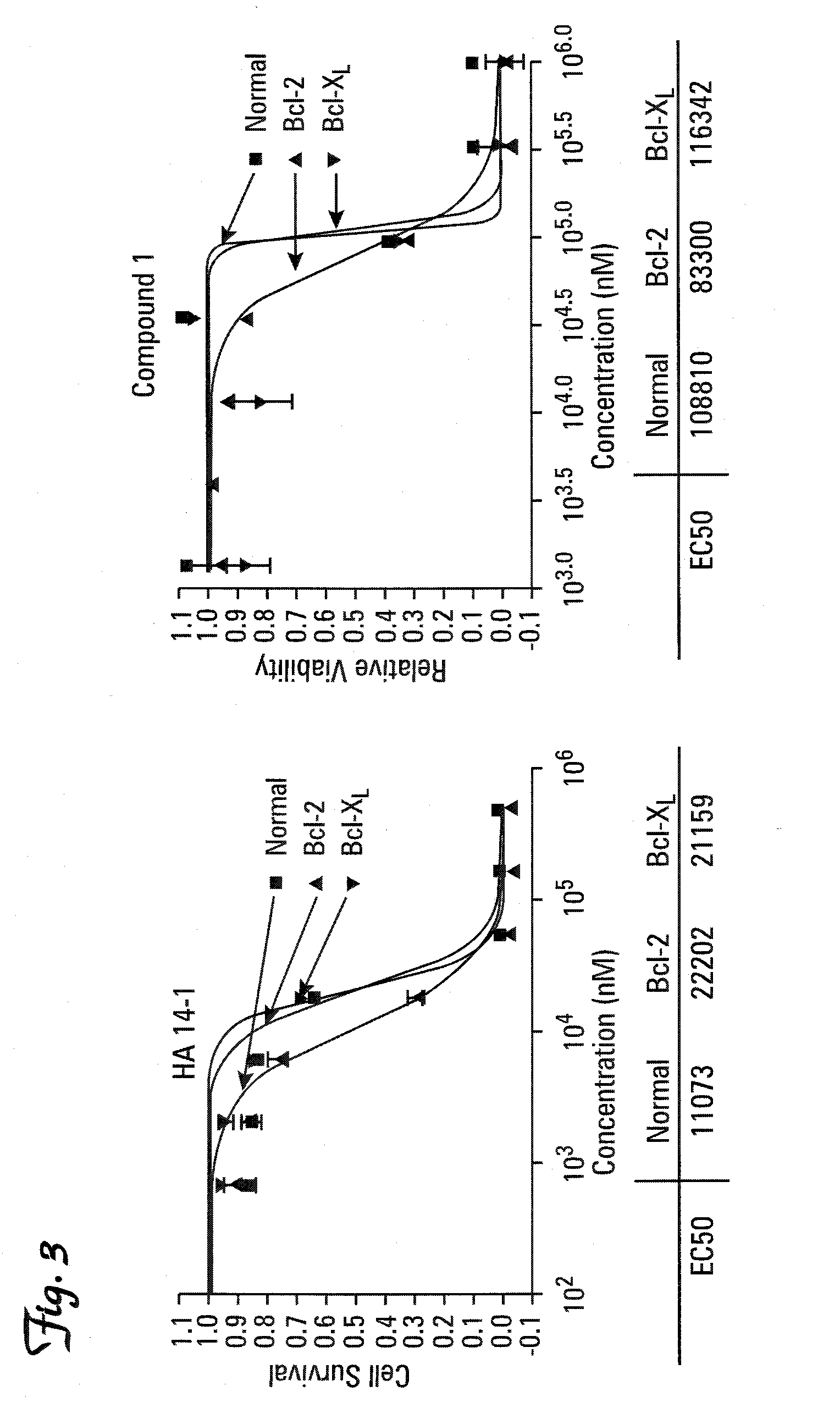Therapeutic compounds
a technology of compounds and compounds, applied in the field of therapeutic compounds, can solve the problems of limited clinical use of ha 14-1, increased survival of cancerous cells, and resistance to various chemotherapeutic agents
- Summary
- Abstract
- Description
- Claims
- Application Information
AI Technical Summary
Benefits of technology
Problems solved by technology
Method used
Image
Examples
example 1
Synthesis of Ethyl-2-amino-6-bromo-4-(2-cyano-1-ethoxy-1-oxopropan-2-yl)-4H-chromene-3-carboxylate (compound 3)
[0142]
[0143]In a round-bottom flask equipped with a magnetic stirrer, 5-bromo-salicylaldehyde (0.050 g, 0.24 mmol) was dissolved in ethanol (2 ml) and to it molecular sieves 3A (0.1 g) were added. The reaction mixture was stirred followed by the addition of α-methyl ethyl cyanoacetate (0.031 g, 0.24 mmol). The resultant mixture was stirred for another 30 minutes followed by the addition of ethyl cyanoacetate (0.0025 g, 0.024 mmol). After 4 hours, another portion of ethyl cyanoacetate (0.0025 g, 0.024 mmol) was added and the reaction stirred for 12 hours at 25° C. The molecular sieves were then filtered off, and washed with THF (3×5 ml) and methylene chloride (3×5 ml). The combined filtrate was concentrated under vacuum. The crude reaction mixture was washed with hexanes to remove the unreacted 5-bromosalicylaldehyde (0.038 g). Compound 3 was obtained in pure crystalline for...
example 2
Synthesis of Ethyl-2-amino-6-bromo-4-(2-ethoxy-2-oxoethyl)-4H-chromene-3-carboxylate (Compound 1)
[0144][0145]a. Synthesis of 6-bromocoumarin: In a round bottom flask equipped with a magnetic stirrer and an ice-water bath, N,N-dimethylacetamide (1.98 mmol, 2 eq) was taken followed by the addition of phosphorus oxychloride (1.98 mmol, 2 eq). The reaction mixture was allowed to stir in the ice bath for 30 minutes followed by addition of 5-bromosalicylaldehyde (0.2 g, 0.99 mmol, 1 eq). The reaction mixture was then heated at 68-70° C. for 3 hours. Following this the reaction mixture was cooled to room temperature and saturated NaHCO3 solution (10 ml) was then added to it. This mixture was subsequently heated at 68-70° C. for another 30 minutes. The crude reaction mixture was cooled and acidified (1 N HCl) to afford an off-white solid which was filtered and washed with water. Yield (56%)[0146]b. Synthesis of Ethyl-2-amino-6-bromo-4-(2-ethoxy-2-oxoethyl)-4H-chromene-3-carboxylate: In a ro...
example 3
Synthesis of Ethyl-2-amino-6-(3,5-dimethoxyphenyl)-4-(2-ethoxy-2-oxoethyl)-4H-chromene-3-carboxylate
[0148][0149]a. Synthesis of 3,5-dimethoxyphenylboronicacid: In a flame dried vessel, cooled under argon 3,5-dimethoxy bromo benzene (3 g, 13.82 mmol) was taken in dry THF (36 ml). The resultant mixture was stirred to obtain a clear solution. This reaction mixture was then cooled to −78° C. and maintained at this temperature for 15 min. This was followed by the addition of n-BuLi (10.92 ml, 2.1M in hexane) following which the reaction was stirred for 30 min. Triisopropyl borate (5.2 g, 27.64 mmol) was then added drop wise and the reaction was stirred at −78° C. for further 2 hr. The reaction was subsequently allowed to warm to room temperature and acidified to pH 2 using sulphuric acid (2M). The resultant mixture was then extracted using ethylacetate. The extracts were combined, dried (MgSO4) and the solvent removed under vacuum. The crude solid was purified using petroleum ether to yi...
PUM
| Property | Measurement | Unit |
|---|---|---|
| temperature | aaaaa | aaaaa |
| temperature | aaaaa | aaaaa |
| Rg | aaaaa | aaaaa |
Abstract
Description
Claims
Application Information
 Login to View More
Login to View More - R&D
- Intellectual Property
- Life Sciences
- Materials
- Tech Scout
- Unparalleled Data Quality
- Higher Quality Content
- 60% Fewer Hallucinations
Browse by: Latest US Patents, China's latest patents, Technical Efficacy Thesaurus, Application Domain, Technology Topic, Popular Technical Reports.
© 2025 PatSnap. All rights reserved.Legal|Privacy policy|Modern Slavery Act Transparency Statement|Sitemap|About US| Contact US: help@patsnap.com



